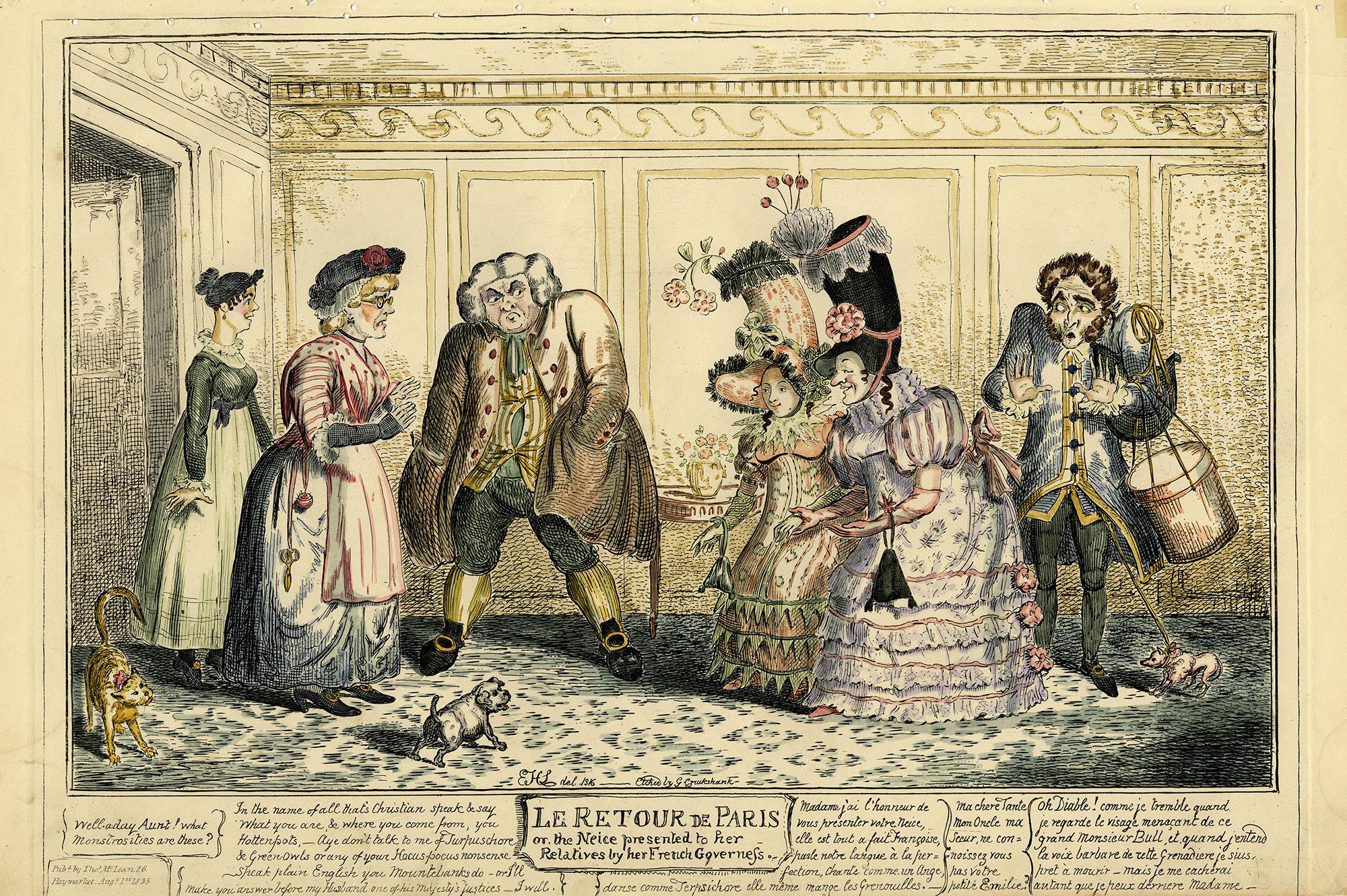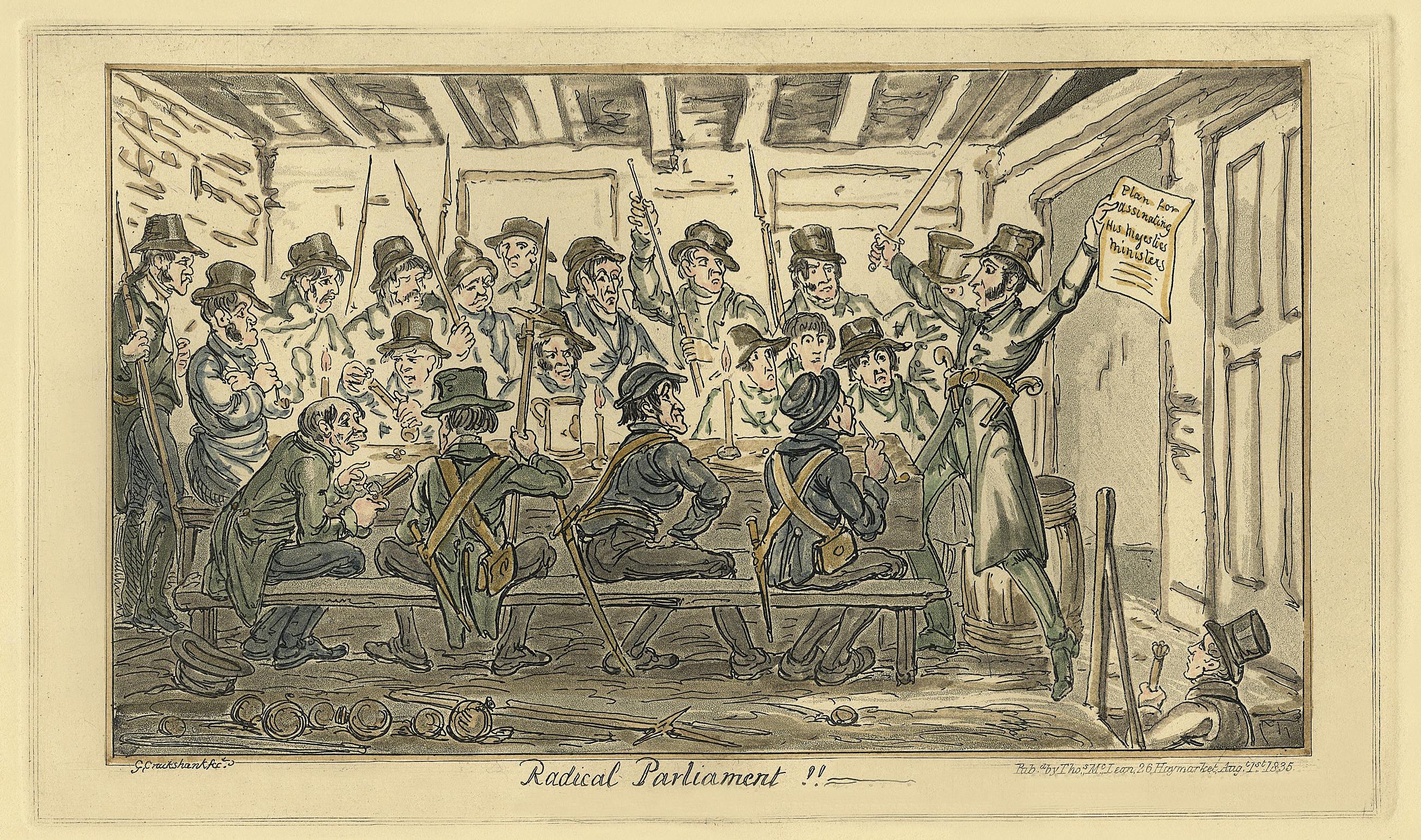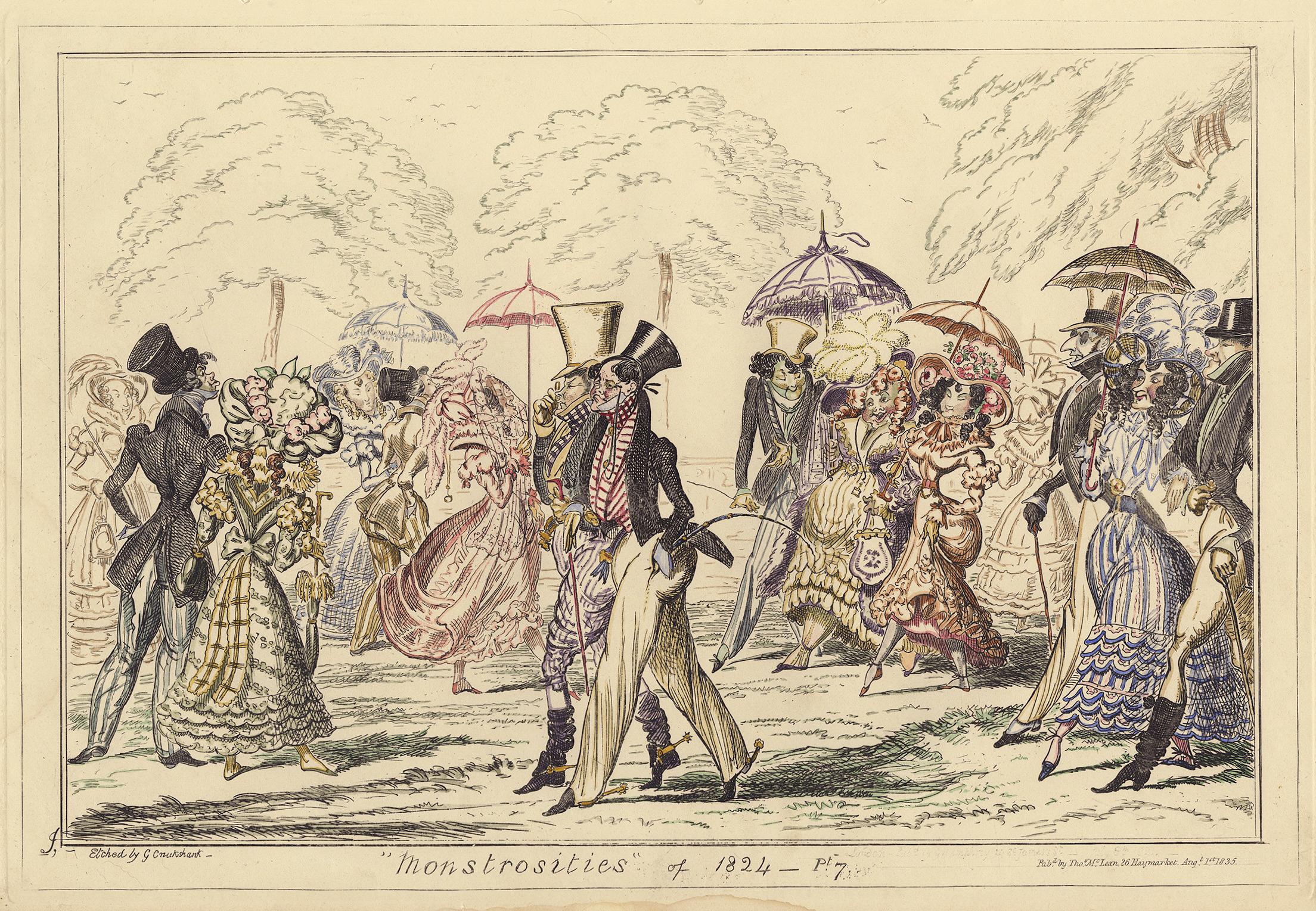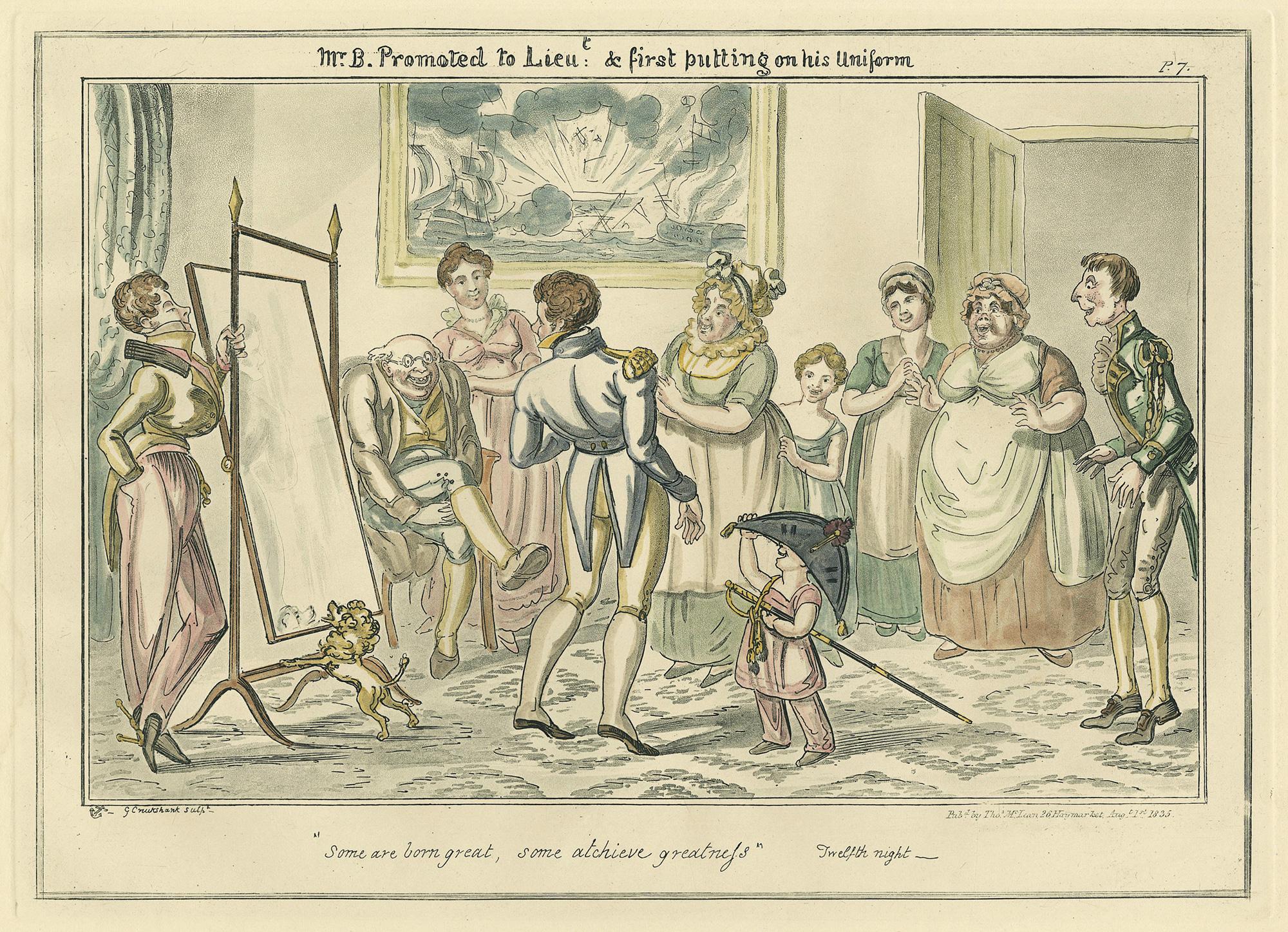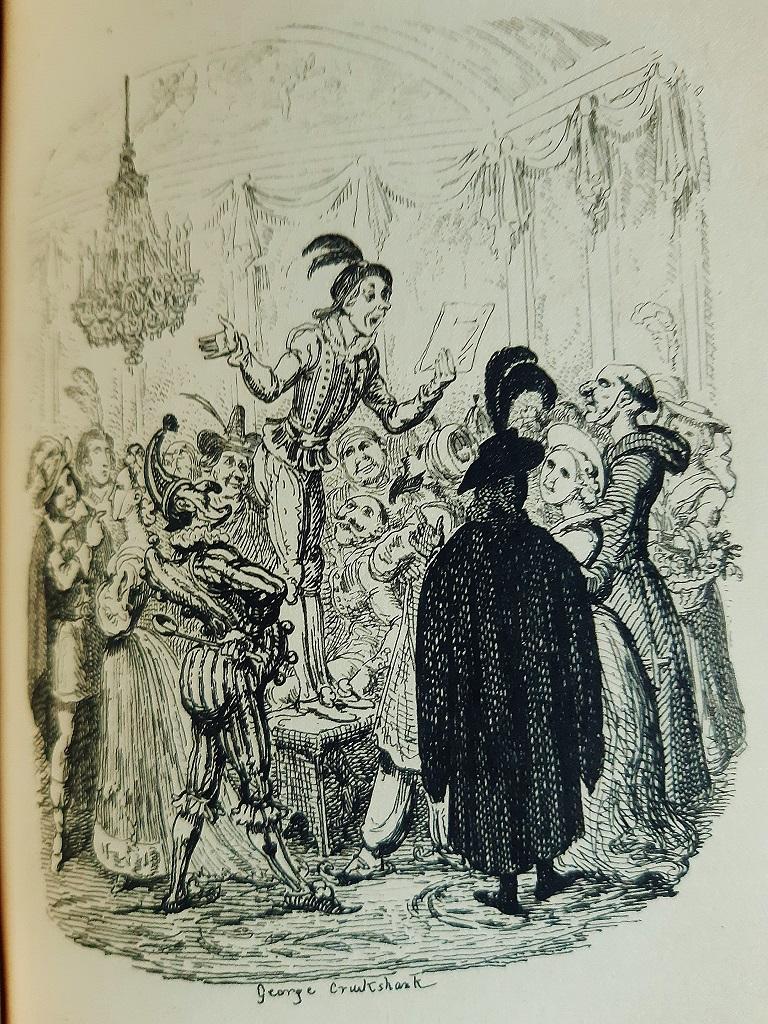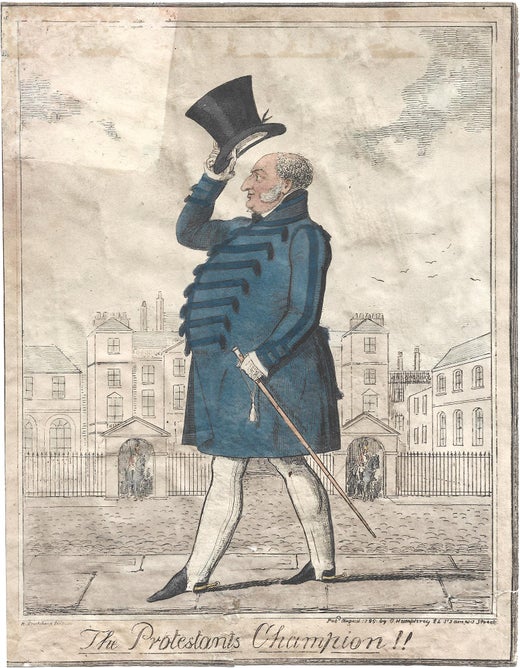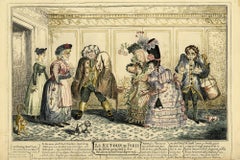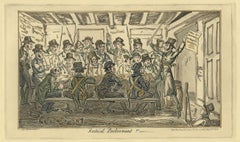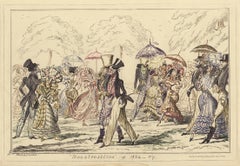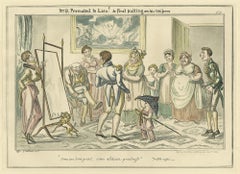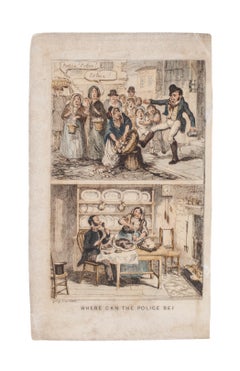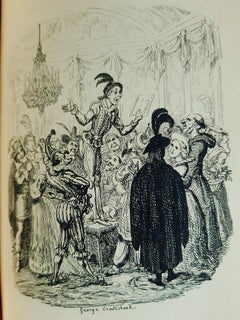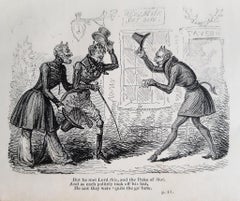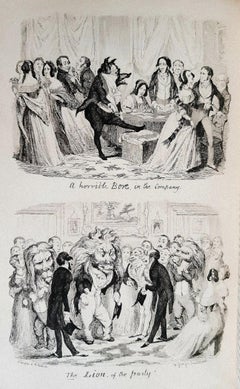George CruikshankA Scene in the New Farce —as performed at the Royalty Theater1831
1831
About the Item
- Creator:George Cruikshank (1792 - 1878, British)
- Creation Year:1831
- Dimensions:Height: 9.625 in (24.45 cm)Width: 13.75 in (34.93 cm)
- Medium:
- Period:
- Condition:
- Gallery Location:Middletown, NY
- Reference Number:Seller: BH1641stDibs: LU1979210341522
George Cruikshank
George Cruikshank was a British caricaturist and book illustrator praised as the modern Hogarth during his life. His book illustrations for his friend Charles Dickens, and many other authors, reached an international audience. Cruikshank was born in London. His father, Isaac Cruikshank, was one of the leading caricaturists of the late 1790s, and Cruikshank started his career as his father's apprentice and assistant. His older brother, Isaac Robert, also followed in the family business as a caricaturist and illustrator. Cruikshank's early work was a caricature, but in 1823, at the age of 31, he started to focus on book illustration. He illustrated the first, 1823 English translation (by Edgar Taylor and David Jardine) of Grimms' Fairy Tales, published in two volumes as German Popular Stories. On 16th October 1827, he married Mary Ann Walker (1807–49). Two years after her death, on 7th March 1851, he married Eliza Widdison. The two lived at 263 Hampstead Road, North London. Upon his death, it was discovered that Cruikshank had fathered 11 illegitimate children with a mistress named Adelaide Attree, his former servant, who lived close to where he lived with his wife. Adelaide was ostensibly married and had taken the married surname Archibold.
- ShippingRetrieving quote...Shipping from: Middletown, NY
- Return Policy
More From This Seller
View AllEarly 19th Century Victorian Figurative Prints
Watercolor, Etching
Mid-19th Century Victorian Figurative Prints
Watercolor, Etching
Mid-19th Century Victorian Figurative Prints
Watercolor, Etching
Early 19th Century Victorian Figurative Prints
Watercolor, Etching
Early 19th Century Victorian Figurative Prints
Watercolor, Etching
Early 19th Century English School Portrait Prints
Watercolor, Handmade Paper, Engraving, Etching
You May Also Like
19th Century Modern Figurative Prints
Etching
1830s More Art
Paper, Etching
1830s Modern More Art
Paper, Etching, Woodcut
1840s Modern More Art
Paper, Etching
1820s Modern More Art
Paper, Etching
20th Century Prints and Multiples
Color
